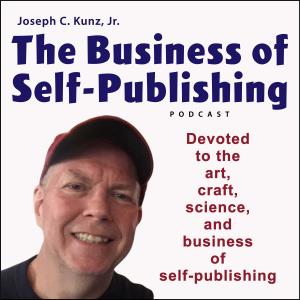The Business of Self-Publishing

The 5 Essential Parts Of A Powerful Book Introduction
Synopsis
Buyers of your book don’t care why you wrote your book. They just want to know how your book can help them improve their life. Your book’s Introduction gives you an opportunity to convince the buyers that your book is the best one out there that can help them. Here are the five essential parts of a powerful Introduction that'll help you achieve that.
What You Will Learn
1. You will learn about the 5 essential parts needed to create a complete and powerful book Introduction.
2. You will learn about how each of those parts will work together to make the Introduction an important marketing tool.
3. You will learn about what information each part must include helping you make an emotional connection with the reader.
Introduction
Your book’s Introduction is a quick way for you, the author, to explain how your book is going to help the reader. This explanation is what will make your book’s Introduction a powerful sales tool for you to use to hook the reader into buying your book and reading it. Buyers of your book don’t care why you wrote this book.
They just want to know how your book can help them improve their life. Your book’s Introduction gives you an opportunity to convince the buyers that your book is the best one out there that can help them.
To do this you should include the following five parts in your book’s Introduction:
Part # 1. The Hook – Why Should They Buy Your Book?
Answer this question properly, and you will sell more books. Here you must compel your potential buyer to read your book, so they will want to buy it. To do this you must grab the reader’s attention.
Grab them with a telling snippet from your book, or a shocking news headline, or dramatic facts and statistics, or a famous quote. What are their concerns or challenges that your book will help them solve? Put yourself into their shoes, and explain why they should buy your book.
Part # 2. The Connection – Describe Your Reader’s Problem
Here you must make an emotional connection with your reader. You wrote the book, so you must show that you really understand the challenges, problems, and risks, etc., that have caused your audience to seek out your book in the first place. Why is your audience having these issues?
Why haven’t they been able to solve them? Why are these issues so hard to fix or solve? Explain to your audience why and how you know about these questions. Convince them that you are the one with the answers and that you want to share this information with them.
Part # 3. The Benefits – How Will Your Book Help The Reader?
The benefits to the reader are what will sell your book, so include several of your most important benefits. The reader is only considering buying your book and reading it because of the benefits that the reader believes that they will gain.
Include some general benefits, and several specific benefits to reading your book. Keep explaining why they should buy your book. For example, “You will learn how to . . .”; Discover ways to . . .”; "You will improve your . . .".
Part # 4. The Format – What Will Happen In The Coming Chapters?
Here you will give the reader a quick idea about how your book is arranged. Your book’s table of contents has already given the reader a quick glimpse of how your book is arranged and what it will discuss.
But here you will tell the reader about some of the other features that aren't necessarily reflected in the table of contents. For example, tell the reader about the side-bars, tips, facts, stories, interviews, quotes, pictures, diagrams, appendix, etc., that you use to illustrate or enhance your chapters.
Part # 5. The Invitation – Entice The Reader To Read On
This is the conclusion to your Introduction. Just like in a standard conclusion to an essay, quickly summarize what you have been saying throughout your book’s Introduction. Then close the paragraph quickly and enthusiastically with a very short invitation to turn the pa...






 Visit Podcast Website
Visit Podcast Website RSS Podcast Feed
RSS Podcast Feed Subscribe
Subscribe
 Add to MyCast
Add to MyCast